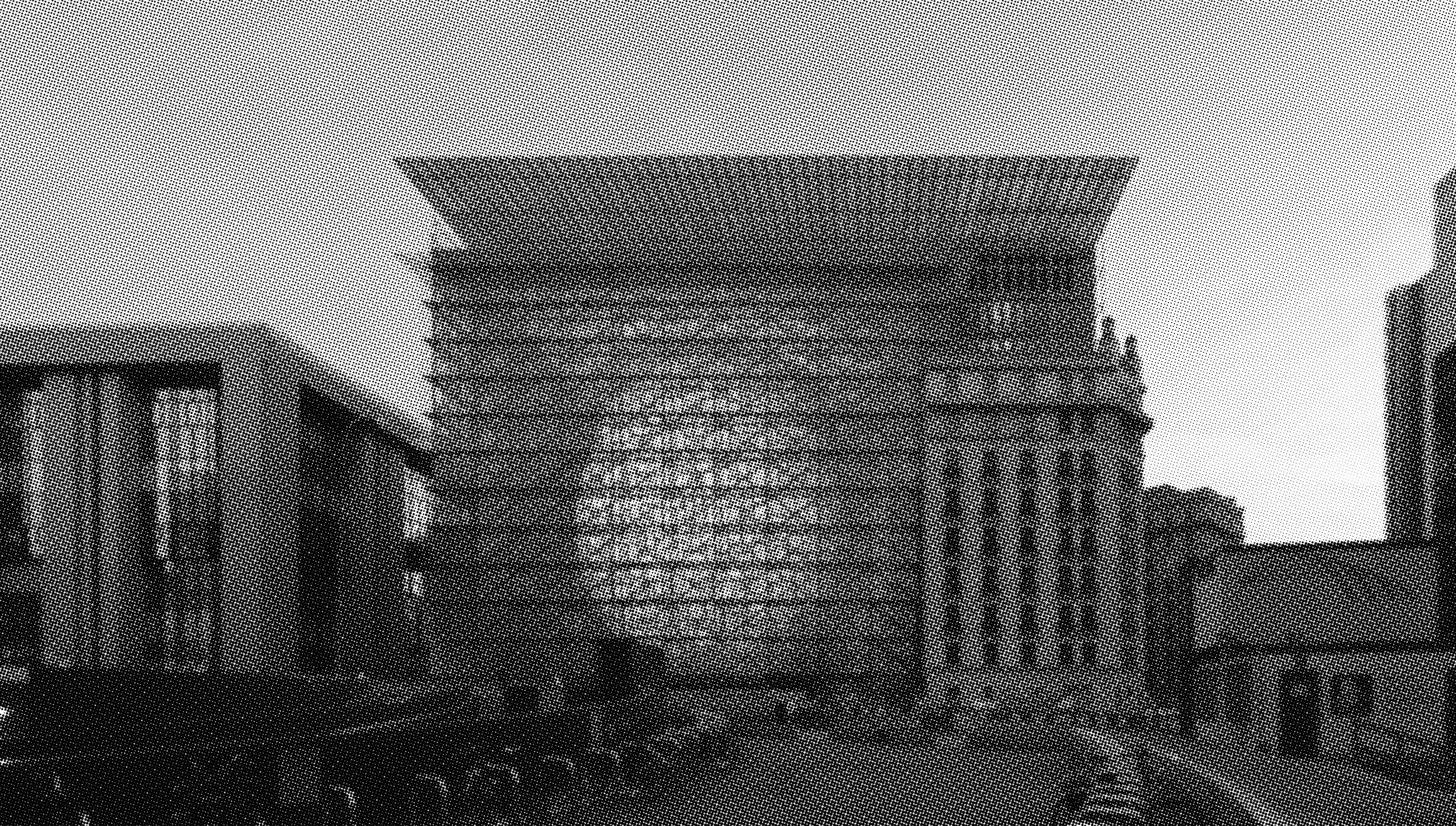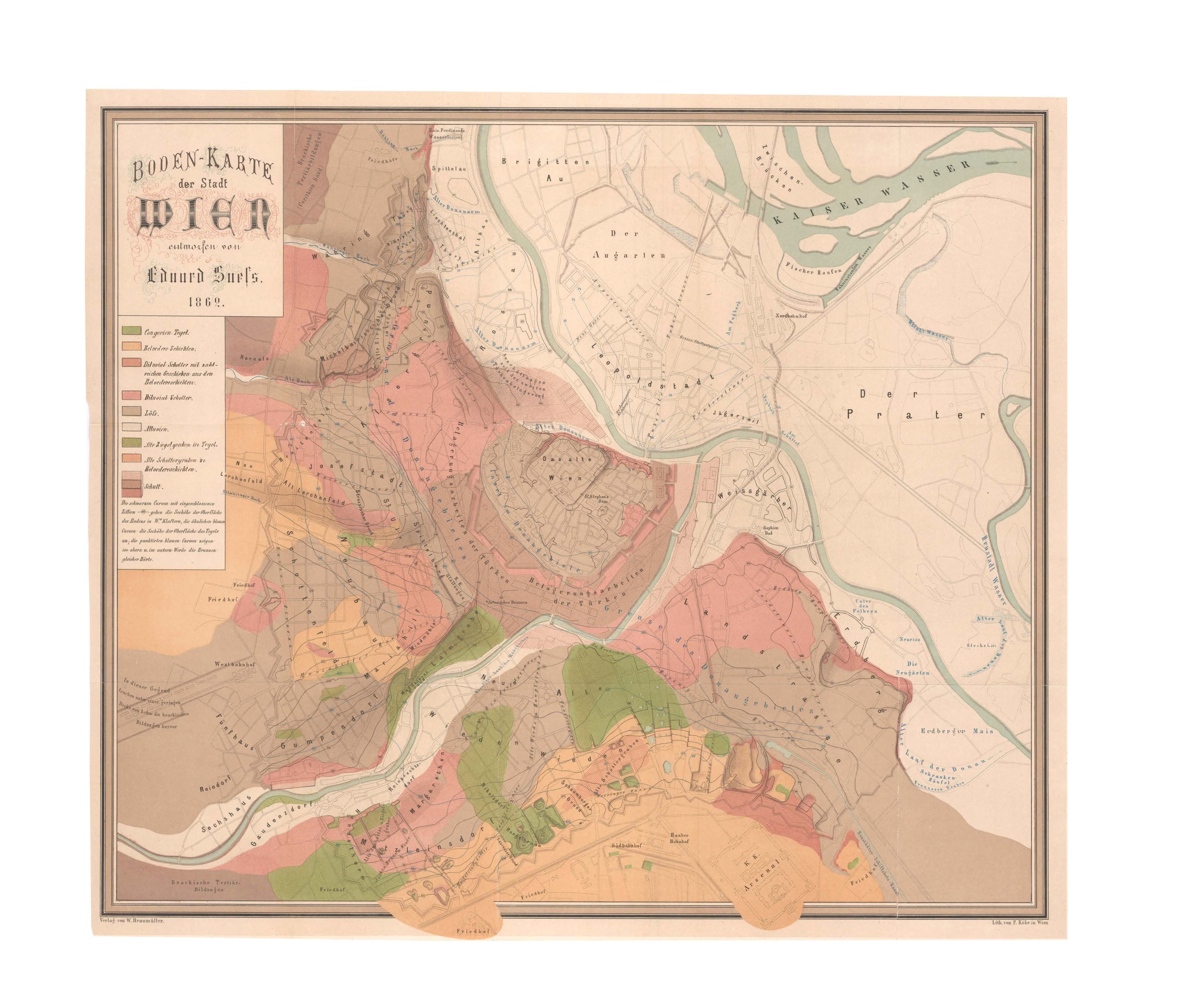

The earth’s geology is shaped by layering, and the layers created by human production are now part of it. This has consequences that the building industry has long failed to take into account.
Despite officially living in the age of the Holocene, our impact on the material makeup of our planet is profound and pervasive. Although the age of the Anthropocene has not yet been confirmed by geologists, we have altered the upper layer of earth’s crust through industrial fabrication to such an extent that the earth’s technosphere now outweighs the total mass of its biosphere: 1.15 trillion tons versus 1.12 trillion tons (Witze, 2024; Jones & King, 2023, pp. 442–444; Elhacham et al., 2020). In 1900, the technosphere made up only 3 percent of earth’s biomass; since then, it has doubled every twenty years (Stokstad, 2020). Architecture’s impact has not yet been calculated with precision, but together with infrastructure, it represents a sizable percentage of this biomass. Changes in technology, building practices, climate, and societal conditions are evident and readable in every layer.
The concept of the Anthropocene traces back to the nineteenth-century naturalist Alexander von Humboldt. In his travels, especially to South America, he systematically examined geology, flora, and fauna, asserting the interconnectedness of organic and inorganic matter and graphically representing ecosystems that were clearly impacted by human presence (Humboldt & Bonpland, 1816). His Cosmos Lectures at the University of Berlin (1827–1828) laid out the mutual symbiosis of natural and cultural phenomena, identifying human interventions such as deforestation, over-cultivation, and industrialization and their possible consequences.
Three decades later, the geologist Eduard Suess investigated the intersection of human culture and geology in reference to the Schuttdecke in Vienna, an archaeological zone consisting of civilization’s sediments and artifacts, including demolished buildings, forming a 30-to-45-foot (or deeper) aggregate layer. Seuss, the founder of geology and the coiner of the term biosphere, published his findings in 1862 (Edgeworth, 2016, p. 208).
Suess’s map of the Schuttdecke, a material assessment of the ground under Vienna, became a cultural and geological concept. From the Roman Empire (first century AD) through the Middle Ages to the present, it continues to expand.
Preservation: Layered Buildings
Nineteenth-century architecture discourse sought to define relationships between matter and form in different ways, including the influence of geology on architectural expression and production. John Ruskin and Eugène Viollet-Le-Duc both articulated the way the earth’s crust shaped architecture through a process of layering, but differed in what they considered to be a suitable approach to preservation in light of it. Viollet-Le-Duc aimed to give older buildings a completeness that they may never have had, while Ruskin sought to preserve their original character and age.
Traditionally, Western cultures assumed buildings would last a long time, so they built with long-lasting materials. While the solidity and value of historic structures led to the idea of adaptive reuse, for practical reasons older buildings also served as quarries for masonry. Stone columns were also reused due to their symbolic value, particularly as spoils to mark a successful conquest (Bilyk, 2020).
Twentieth-century architects like Carlo Scarpa exemplify creative preservation through additive approaches, encouraging layering over time. Modern preservation theories accept an ongoing interaction with existing buildings, allowing sedimentation to be preserved. As part of his facade-cleaning process, Jorge Otero-Pailos preserves a valued layer of the residue, as documented in his series The Ethics of Dust (Raskin, 2011). Otero-Pailos’s website describes “a cleaning process in which latex was sprayed onto the walls of a UNESCO world heritage building, then peeled off, gently lifting dirt from the surface.” This layer is Ruskin’s “golden stain of time.”
The Long Road to Circular Construction
Modern architecture favors a sense of openness, claiming light and air for all. More complex and lightweight materials, however, have resulted in buildings that are much more difficult to renew and adapt. Economic and legal frameworks and the use of less durable building materials have created a kind of disposable architecture. Parallel to this, other movements also support ecological approaches to construction and materiality. John Habraken, for example, designed Heineken’s WOBO beer bottle to be as recyclable as a self-built housing component. His “open building” concept saw buildings as “supports,” public and long-lived containers for people’s private and ephemeral lives (Habraken, 1972).
At an urban scale, Paolo Soleri established his visionary Arcosanti community in the Arizona desert in 1970 as a demonstration of arcology, “the ideal way to counteract difficult climactic situations.” Opposing wasteful consumption and capitalist exploitation, Soleri imagined a “reorientation of life through a process of urban implosion, wherein the city is planned in such a way as to conserve the Earth’s energy and resources (energy and geology being linked), designed to be compact and three-dimensional” (Grierson, 2016). Instead of an arrangement of individual buildings, he imagined a complex framework that becomes one with nature, its outer skin occupied by citizens—a form of layering that challenges Western urbanism’s energy-intensive relationship with the environment in a way that seems even more urgent in 2025 (Soleri, 1969).
The necessity to recast this relationship between community and ecology requires a rethinking of the layer that is architecture, agriculture, and other human production. Our impact has intensified; industrialized societies generate far more anthropogenic waste, and it is much more complex than what Eduard Seuss found below Vienna. Our understanding of embedded carbon has made demolition an unsustainable strategy, increasing the need to reuse existing buildings and/or their components.

A reinforced sense of Humboldt’s assertion of interconnectedness, echoed in James Lovelock’s Gaia hypothesis, can be found in William McDonough and Michael Braungart’s cradle-to-cradle holistic circularity. McDonough and Braungart assessed the cycle of human production and, like Soleri, questioned a system of design and production rooted in the industrial revolution, one that “attempts to work by its own rules, which are contrary to those of nature.” The cradle-to-grave paradigm of this system gives us today’s Schuttdecke, a toxic mix of “old furniture, upholstery, carpets, televisions, clothing, shoes, telephones, computers, complex products, and plastic packaging, as well as organic materials like diapers, wood, and food waste.” Many of these products are made from materials that are wasted rather than preserved or reused (McDonough & Braungart, 2002). As Wojciech Gorgolewski (2017) put it, “Today buildings are a graveyard for materials. A building at the end of its life is an asset to be valued and that innovation and imaginative design can offer new opportunities for using discarded materials and components as valuable parts of buildings.” This builds on upcycling, making products of higher quality or value out of discarded materials. McDonough and Braungart applied this method to projects like their Amsterdam business park (McDonough & Braungart, 2013).
Reimagining How We Build
A greater focus on existing buildings and building components will lead to a new architectural vernacular based on the kit of parts available through reuse. Methods of fabrication and assembly will change, and with it, the role of the architect and all others involved. Expressive layering of old and new will be even more commonplace, generating meaning through the sequence of our encountering them. Construction processes will include local frameworks for deconstruction, storage, and reuse. Digital twins of buildings and digital inventory databases will simplify cataloging and retrieval.
Our aesthetic expectations will shift from a repetitive modularity based on a limited palette of mass building products and materials to the wider possibilities offered by aggregating and collaging disparate elements—a looser modularity compatible with continuous adaptation. Reusing building products and other discarded customer goods will lead to new ways to mount, arrange, and join building elements. Facades will again be inspired by textile techniques such as weaving, quilting, and layering. This is already visible in the European Union Headquarters Expansion in Brussels, which embraces reclaimed layers that symbolize the value and recovery of products. The building was completed in 2017 and designed by Philippe Samyn and Partners, Studio Valle, and Buro Happold. Its outer skin is composed of reused oak windows arranged in a modular framework, combining prefabrication and customization. This representation of the facade, made from 3,000 recycled window frames, mines the built environment for contemporary architectural expression.
The process of replacing the linear construction industry with a circular one is underway, evidenced by the European Union’s adoption of the Circular Economy Action Plan (European Commission, 2020). Experimental projects and initiatives are taking place within the industry, academia, and government, and architecture schools worldwide study reuse and transformation (Baker-Brown & Brooker, 2024). The engineering firm ARUP advertises a “modular system for circular buildings.” These initiatives exemplify the comprehensive shift to adaptive reuse, redefining waste as raw material to be recycled or upcycled and rethinking humanity’s relationship with nature. Frameworks to integrate the layering and re-layering of pasthuman production have the potential to make our technosphere a supportive part of nature and its processes. Nothing humans produce should go to waste—especially our built environment. Circularity is our only future.
References
Baker-Brown, D., & Brooker, G. (2024). The pedagogies of re-use. Routledge.
Bilyk, K. (2020). Building as continuous quarry. Plat, May 27, 2020.
Edgeworth, M. (2016). The Ground beneath our Feet. In G. Mackert & P.Petritsch (Eds.), Mensch macht Nature/Humans Make Nature: Landschaft im Anthropozän/Landscapes of the Anthropocene (pp.78-93) De Gruyter.
Elhacham, E., Ben-Uri, L., Grozovski, J., Bar-On, Y. M., & Milo, R. (2020). Global human-made mass exceeds all living biomass. Nature, 588 (7838): 442-444.
European Commission. (2020). Circular economy action plan.
Gorgolewski, W. (2017). Resource Salvation: The Architecture of Reuse. Wiley.
Grierson D. (2016). Unfinished Business at the Urban Laboratory - Paolo Soleri, Arcology, and Arcosanti. Open House International, 41 (4): 63-72.
Habraken, N. J. (1972). Supports. Routledge.
Humboldt, A., & Bonpland, A. (1816). Voyage aux régions équinoxiales du Nouveau Continent, fait en 1799–1804. F. Schoell.
Jones, A., & King, N. (2023). The materials used by humans now weigh more than all life on Earth— here’s four graphs that reveal our staggering impact on the planet. The Conversation, June 12, 2023.
Kieran, S., & Timberlake, J. (2004). Refabricating architecture. McGraw-Hill.
McDonough, W., & Braungart, M. (2002). Cradle to cradle. North Point Press.
McDonough, W., & Braungart. M. (2013). The upcycle. North Point Press.
Raskin, L. (2011, January). Jorge Otero-Pailos and the ethics of preservation. Places.
Soleri, P. (1969). Arcology: The City in the Image of Man. The MIT Press.
Stokstad, E. (2020,December 9). Human “stuff” now outweighs all life on Earth. Science.
Witze, A. (2024, March 6). Geologists reject the Anthropocene as Earth’s new epoch—after 15 years of debate. Nature.